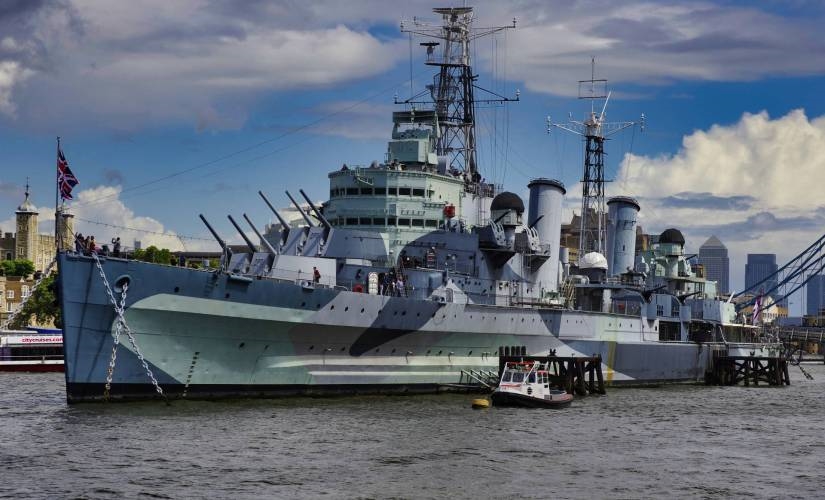AI-Powered War Machines: The Future of Warfare Is Here
AI-Powered War Machines: The Future of Warfare Is Here

The advancement of robotics and artificial intelligence (AI) has paved the way for a new era in warfare. Gone are the days of manned ships and traditional naval operations. Instead, the US Navy’s Task Force 59 is at the forefront of integrating AI and robotics into naval operations. With a fleet of autonomous robot ships, the Navy aims to revolutionize the way wars are fought at sea.
The Persian Gulf serves as a testing ground for Task Force 59’s fleet of robot ships. These unmanned vessels, ranging from solar-powered kayaks to surfboard-style boats, are equipped with state-of-the-art technology. Their purpose is to act as the eyes and ears of the Navy, collecting data through cameras, radar, and hydrophones. Pattern-matching algorithms help differentiate between oil tankers and potential threats like smugglers.
One particular vessel, the Triton, stands out with its ability to submerge for extended periods. This feature allows it to evade enemy detection and resurface when it is safe to do so. The Triton can stay submerged for up to five days, utilizing this time to recharge its batteries and transmit valuable information back to base.
AI plays a crucial role in the success of Task Force 59’s operations. By harnessing the power of algorithms and machine learning, the Navy can analyze vast amounts of data collected by the robot ships. This enables them to make informed decisions and respond quickly to emerging threats. AI image generators are also utilized, raising questions about the future of artists in a world driven by technology.
Despite its potential, AI is not without its limitations. The complexity of navigating the unpredictable seas and detecting unconventional threats poses challenges that require continuous improvement and development of AI systems. However, the Navy is committed to staying at the forefront of AI technology and integrating it seamlessly into naval operations.
The deployment of autonomous robot ships is just the beginning of a future dominated by AI-powered warfare. The Navy’s focus on robotics and AI reflects the broader trend towards autonomous systems in the military. The ability to operate without human intervention allows for increased efficiency, reduced risk to personnel, and the potential for more strategic decision-making.
The war in Ukraine serves as a stark reminder of the increasing role of drones and autonomous systems in modern conflicts. Ukrainian-built drone boats, armed with explosives, targeted a Russian-occupied naval base, sparking concerns about the potential for widespread use of autonomous weapons. However, the Fifth Fleet operating in the Gulf region remains relatively uninformed about these developments, highlighting the need for better cross-regional intelligence sharing.
As AI technology continues to advance, ethical considerations surrounding its use in warfare become increasingly important. The ability of autonomous systems to make life-or-death decisions raises questions of accountability and the potential for unintended consequences. Striking the right balance between leveraging AI’s capabilities and ensuring human oversight and control is crucial to avoiding catastrophic outcomes.
The deployment of AI in warfare also has implications for civilian society. As AI becomes more prevalent, it has the potential to transform various aspects of everyday life. The development of conversational AI interfaces, such as OpenAI’s ChatGPT, illustrates the rapid progress being made. However, society must grapple with the implications of these advancements and ensure they are used responsibly and ethically.
In conclusion, the integration of AI and robotics into naval operations marks a significant shift in the future of warfare. Task Force 59’s fleet of autonomous robot ships showcases the Navy’s commitment to staying at the forefront of technological advancements. With AI-driven algorithms, these vessels serve as distributed eyes and ears, collecting invaluable data and enabling swift decision-making.
However, the rise of AI in warfare also poses ethical challenges that must be addressed. The potential for autonomous systems to make life-or-death decisions necessitates careful consideration of accountability and human oversight. As society grapples with the implications of AI, it is essential to strike a balance between leveraging its capabilities and ensuring responsible and ethical use.
The AI-powered, totally autonomous future of war is here, and it is our responsibility to navigate its complexities with caution and foresight. By embracing the potential of AI while upholding our ethical principles, we can shape a future where technology serves humanity’s best interests.
First reported on Wired
Frequently Asked Questions
Featured Image Credit: Unsplash
The post AI-Powered War Machines: The Future of Warfare Is Here appeared first on ReadWrite.
(13)


